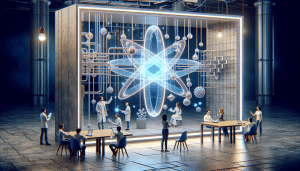AI Tools You Should Explore for Everyday Life
Aiden Foster September 8, 2025
Artificial intelligence isn’t just for tech giants anymore. Everyday users now tap into AI tools to simplify tasks, boost productivity, and enhance experiences. This guide explores practical uses, common concerns, and helpful options for integrating AI into your daily routine while ensuring privacy and transparency.
AI That Impacts Your Daily Routines
Modern artificial intelligence quietly powers much of our daily experience. From personalized recommendations on streaming platforms to smart assistants responding to voice commands, AI tools have become a staple in homes and workplaces. The technologies driving these changes analyze data to learn preferences and behaviors, aiming to improve convenience and efficiency. Innovations like natural language processing let you interact with devices more naturally, while pattern recognition provides useful suggestions within applications you already use. Through user-friendly interfaces, AI makes routines smoother, allowing you to focus on what matters most.
Voice-activated devices are now almost common in households. Asking a smart speaker about the weather, setting reminders, or searching online can be done without lifting a finger. Beyond personal assistants, AI is in cameras, thermostats, and even refrigerators—automating mundane tasks and learning optimal patterns. These smart home solutions adapt to habits over time, increasing comfort and energy efficiency without being intrusive. Many users find that once they start using AI-driven features, they quickly become essential parts of daily life.
Beyond home life, AI transforms day-to-day productivity and communication. Email clients sort out spam intelligently, collaboration platforms summarize meeting notes, and calendar applications automatically schedule appointments by parsing conversations. Even social media feeds use algorithms to tailor what you see, aiming to surface content most relevant to individual interests. AI’s behind-the-scenes support enables people to do more with less effort, showcasing how significant its silent influence has become in modern routines.
Personal Productivity with AI: How Smart Tools Simplify Work
AI-powered productivity tools can reduce repetitive tasks and improve focus at work or study. Document editors now offer smart grammar correction and style suggestions based on advanced natural language processing. Project managers benefit from AI scheduling assistants that estimate task durations and automate reminders, resulting in better time management. Automated transcription of meetings or interviews further helps to streamline workflows for professionals and students alike.
Digital note-taking and knowledge management apps now employ semantic search capabilities. Instead of searching only for exact keywords, these systems understand intent and context, surfacing more relevant information. This is especially useful for researchers, writers, or anyone who juggles large amounts of digital files and data. AI classification features tag documents and suggest folders, building an organized information ecosystem over time.
Efficiency improvements also reach beyond traditional office settings. For instance, AI-based language translation apps enable seamless communication across borders. Students use AI tutoring platforms with adaptive learning algorithms to personalize educational content—increasing retention and comprehension rates. As a result, many report higher satisfaction with both academic and professional pursuits, making AI a valuable companion in lifelong learning and daily work.
Privacy and Trust: What to Know When Using AI Tools
With the growing adoption of artificial intelligence, concerns about privacy and data security emerge. Many AI-driven services need access to personal details or track usage patterns to deliver personalized experiences. Transparency from providers is key: it’s important to understand what information is collected and how it’s stored. Reputable platforms often outline these practices in detailed privacy policies, helping users make informed choices before enabling new features.
Several countries now regulate how AI applications collect and process your data. The European Union’s General Data Protection Regulation (GDPR) and similar policies elsewhere enforce limits on how companies gather, use, and share data. Some applications give options to opt out of certain types of tracking or request data deletion at any time. Tools with strong encryption and local storage options ensure sensitive information stays protected, reducing the risk from potential data breaches or unauthorized access.
Predictive analytics in consumer apps can create the impression of surveillance, especially if notifications feel overly personalized. Users are encouraged to explore privacy dashboards and use available controls to manage data access. When evaluating AI tools, look for certifications or transparency statements that demonstrate commitment to ethical data handling. Such proactive measures support trust in AI-powered solutions, balancing the promise of convenience with the need for robust user protections.
The Rise of Generative AI: Creativity Unlocked
Generative AI refers to systems that create new images, text, music, or even code from scratch, inspired by patterns in massive datasets. These tools empower professionals, artists, and hobbyists alike. For example, writers use AI as brainstorming partners, receiving fresh ideas or automatic drafts for stories, blogs, and emails. Graphic designers experiment with AI-driven art platforms to discover new visual styles and get project inspiration—often in seconds instead of hours.
The advancement in generative models means you don’t have to be a technology expert to benefit. Video editors apply AI tools to automatically color-correct footage or generate voiceovers from scripts. Musicians explore melody generators that enhance creativity, while coders leverage AI assistants to suggest solutions or debug code. These applications accelerate project timelines and lower barriers to entry for creative work, making innovation accessible to more people than ever before.
As generative AI grows in popularity, questions arise about originality and copyright. Many platforms include guidelines on responsible content creation, emphasizing the need for human oversight. Learning how to prompt these tools effectively fosters collaboration between human intuition and computational power. Instead of replacing creators, generative AI aims to support and augment their best work, embodying a new era of digital creativity.
AI in Daily Communication and Social Connections
AI-driven communication platforms make keeping in touch easier and more meaningful. Email clients and messaging apps now offer predictive typing and smart autocomplete, reducing time spent on routine correspondence. Social networks use recommendation engines to connect you with like-minded people and communities, encouraging healthy digital engagement. Automated moderation tools also filter out spam and harmful content, helping to create safer environments for conversation.
Real-time translation powered by AI brings global communication within reach. Video chat tools instantly convert spoken language or display subtitles, supporting better understanding in personal, academic, and professional interactions. These features lower linguistic barriers and foster relationships across diverse cultures, enabling participation in international communities and remote work teams. The result is a more inclusive digital world, where connection is possible despite linguistic differences.
With social media feeds curated by machine learning, there’s growing awareness of echo chambers and information bubbles. Users are encouraged to seek diverse sources and adjust their content preferences when available. AI can recommend new contacts, events, or resources tailored to evolving interests, but intentional exploration and balance keep digital interactions enriching and relevant. Ultimately, thoughtful AI integration supports genuine relationships and informed communication in everyday life.
AI Tools for Personal Wellbeing and Health
AI-powered wellness apps are reshaping the way many approach physical and mental health. Fitness trackers analyze exercise patterns, suggest personalized routines, and even monitor vital signs, enabling better self-awareness and goal tracking. Nutrition apps scan barcodes and log meals, using smart algorithms to suggest healthier choices. All of this can be done using just a smartphone or wearable device, enhancing daily routines with minimal effort.
Mental health platforms employ AI chatbots to support emotional wellbeing by offering discreet conversations and guided self-help exercises. These are not replacements for therapy, but they serve as useful, stigma-free entry points for those seeking help. Further, sleep apps leverage machine learning to recommend bedtime routines and analyze noise, motion, and environmental factors that may disrupt rest. The goal is to provide actionable feedback without overwhelming the user.
Healthcare professionals use AI for early diagnosis, patient triage, and administrative efficiency, resulting in faster, more accurate care. For individuals, these improvements mean earlier alerts about possible health issues, reminders about medications, or hints on healthier habits. While AI-driven health management continues to evolve, its current role is to augment—not replace—traditional care, making it a supportive companion for everyday wellbeing.
References
1. National Institute of Standards and Technology. (n.d.). Artificial Intelligence. Retrieved from https://www.nist.gov/artificial-intelligence
2. European Commission. (n.d.). Ethics guidelines for trustworthy AI. Retrieved from https://digital-strategy.ec.europa.eu/en/library/ethics-guidelines-trustworthy-ai
3. Future of Life Institute. (n.d.). Benefits & Risks of Artificial Intelligence. Retrieved from https://futureoflife.org/background/benefits-risks-of-artificial-intelligence/
4. U.S. Department of Health & Human Services. (n.d.). Artificial Intelligence for Health and Health Care. Retrieved from https://www.hhs.gov/cto/initiatives/artificial-intelligence-health-health-care/index.html
5. Brookings Institution. (n.d.). How artificial intelligence is transforming the world. Retrieved from https://www.brookings.edu/research/how-artificial-intelligence-is-transforming-the-world/
6. OpenAI. (n.d.). Introducing Generative AI. Retrieved from https://openai.com/blog/generative-models








